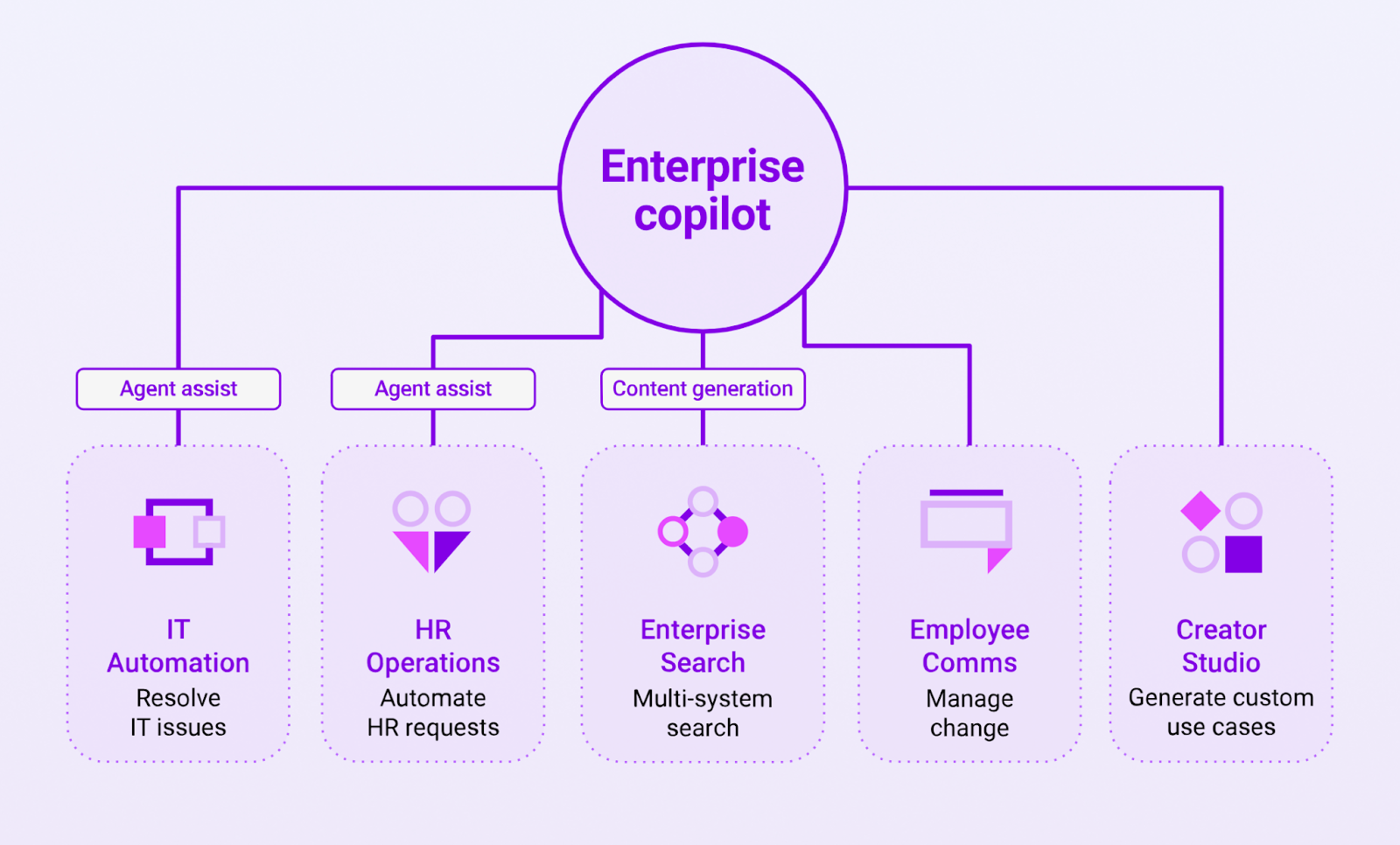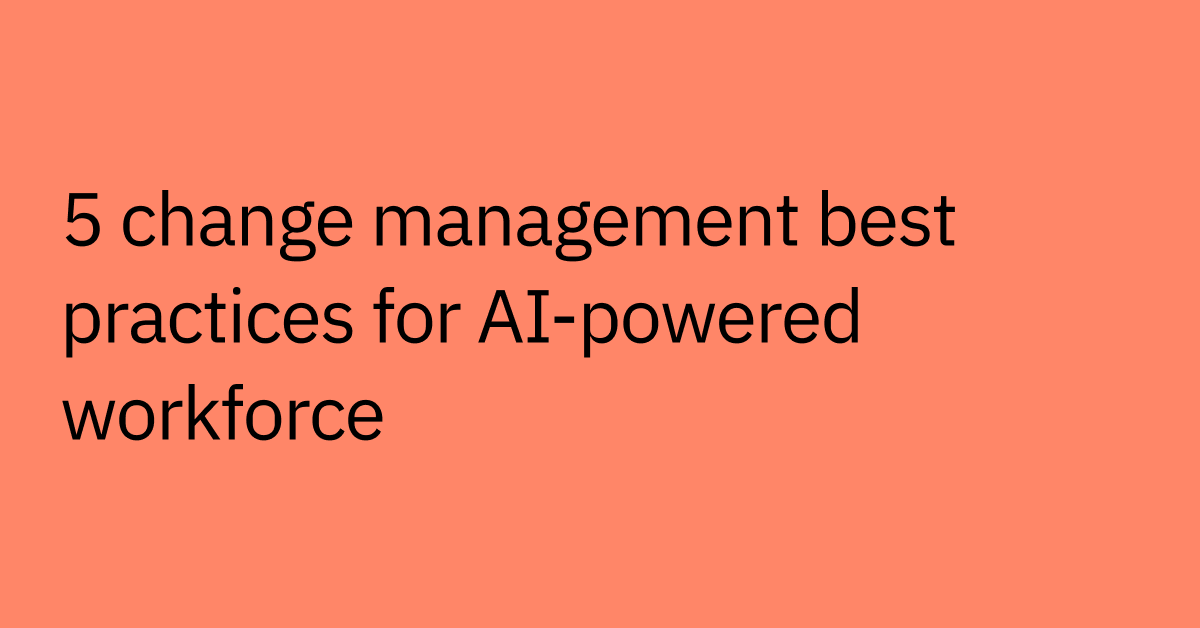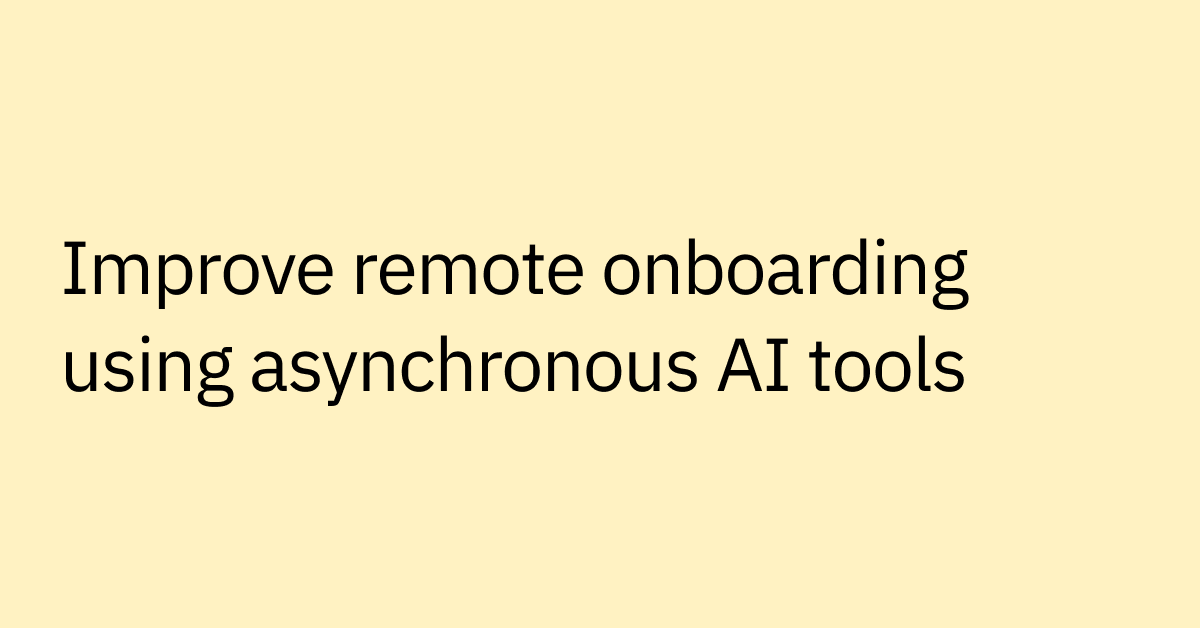Table of contents
With tools like ChatGPT continuing to push the boundaries of what’s possible, businesses across the globe are rapidly adapting to AI-driven solutions.
Artificial intelligence (AI) copilots are a particularly fascinating advancement in today’s digital technology landscape. They can do it all — whether it’s helping you draft an email, answering specific questions, or guiding you through a complex B2B sales process.
With all the things that AI copilots can do, there are times when they almost seem like magic. And that makes them a source of confusion for the people looking to take advantage of this new technology.
The truth is that AI copilots are simply a tool that you can use to level up your digital experience. Albeit, a powerful one.
That said, what exactly are AI copilots? How do they work? And when should you be using them to level up your business conversations?
We answer all those questions — and more — in this introductory guide to copilots.
>> Learn how to build an AI copilot strategy that works for you. Download the enterprise copilot handbook!
What is an AI copilot?
An AI copilot is a conversational interface that uses large language models (LLMs) to support users in various tasks and decision-making processes across multiple domains within an enterprise environment. By leveraging LLMs, AI copilots possess the capability to understand, analyze, and process vast amounts of data.
AI copilots play a crucial role in enhancing productivity and efficiency by:
- Providing context-aware assistance: AI copilots can proactively respond to user needs based on contextual information, ensuring relevant and timely support during critical decision-making processes.
- Automating mundane tasks: By taking charge of repetitive and time-consuming tasks, AI copilots allow users to focus their efforts on strategic and creative work, significantly boosting overall productivity.
- Analyzing data: AI copilots can quickly process large amounts of information, identify patterns and trends, and present actionable insights to drive effective decision-making.
- Enabling seamless communication: AI copilots facilitate effective interactions with various stakeholders, including employees, customers, and vendors, streamlining communication processes and reducing delays or misunderstandings.
- Unifying disparate systems: AI copilots can be the cohesive force connecting multiple platforms, tools, and software applications under one umbrella, ensuring data integrity, accessibility, and compatibility across the enterprise.
In a nutshell, an AI copilot acts to simplify complex tasks and provide valuable guidance and support, ultimately elevating the user experience and driving businesses toward their goals effectively and efficiently. As AI copilots continue to evolve with enhanced capabilities and deeper integration into enterprise ecosystems, they hold the potential to redefine the way businesses operate and compete in the coming years.
What is an enterprise AI copilot?
An enterprise copilot is a fluid conversational interface that connects your employees with every business system. It’s built on hundreds of machine learning models, fine-tuned to your enterprise data. Available across every channel and fluent in more than one hundred languages, your enterprise copilot makes it easier than ever for your employees to get things done.
 Figure 1: Available across every channel and fluent in more than one hundred languages, your enterprise copilot makes it easier than ever for your employees to get things done.
Figure 1: Available across every channel and fluent in more than one hundred languages, your enterprise copilot makes it easier than ever for your employees to get things done.
Why is an enterprise AI copilot needed?
As businesses become increasingly complex and rely on a myriad of software solutions, employees often face the challenge of navigating and managing diverse systems. Traditional, isolated solutions often fall short of resolving cross-system communication problems, that may lead to reduced productivity and inefficiencies. An enterprise AI copilot is the answer to overcoming these challenges.
By integrating all enterprise systems under a single conversational interface, employees can access information and complete tasks more efficiently. The AI copilot simplifies collaboration, making it easier for employees to excel in their functions and significantly boosting overall productivity.
How do AI copilots work
AI copilots have strong foundations built on two essential components: artificial intelligence and integrations across systems.
AI algorithms applied in natural language processing, context understanding, and machine learning enable copilots to predict user needs and provide informed suggestions. Through integrations, AI copilots can interact with a vast range of systems, creating a unified, interconnected platform for seamless communication and task management.
When trying to understand how AI copilots work, it’s important to take note of the four-tiered AI copilot strategy framework in order to understand its strengths and limitations.
- Tier-one AI copilots leverage basic API calls to LLMs as the main part of their AI infrastructure. This allows for an easy lift and low barrier to entry. While these copilots offer lots of general information, they lack domain-specific knowledge, which can lead to hallucinations.
- Tier-two AI copilots involve a customized implementation of a fine-tuned LLM grounded in an organization’s data. While this is a slightly higher lift, the outputs are more customized to the organization and improve security and privacy. They are limited to single-step use cases and can get limited performance due to relying on a single LLMs outputs.
- Tier-three AI copilots involve chaining multiple LLMs together, creating sophisticated pipelines optimized for multi-step use cases that leverage the strengths and capabilities of each LLM involved. In this way, tier-three AI copilots can tackle a broader range of use cases, enhance productivity and efficiency, and address challenges in more sophisticated domains.
- Tier-four AI copilots work to address the challenges inherent in providing extensible employee support and facilitating autonomous decision-making. As a sophisticated LLM system specifically designed for enterprise-wide deployment, these tier-four copilots encompass advanced features like a reasoning engine, analytics, security, and privacy, as well as out-of-the-box connectors catering to the demanding requirements of large organizations.
The performance and functional difference between a tier-one and tier-four AI copilot is staggering, which is why enterprise AI copilots fall into the latter category. They require a sizable investment in capital, personnel, advanced understanding of key machine learning techniques, and a deeply integrated platform that spans the entire enterprise ecosystem.
Benefits of AI copilots
AI copilots offer a wide array of benefits that alleviate common challenges faced by employees, agents, and system developers alike. By streamlining navigation and consolidating resources, users can quickly access required information, considerably reducing the time spent on tedious searches. Furthermore, these intelligent assistants can help handle routine queries, freeing up agents and middle managers to focus on more critical tasks and expedite user support.
AI copilots also ensure that the full potential of existing technological systems is leveraged. By promoting seamless interaction with powerful backend tools, employees can perform their jobs with greater precision and effectiveness. These advanced AI systems extend beyond traditional chatbots or virtual assistants, providing a differentiated value through continuous learning, adaptation, and prediction.
Moreover, AI copilots integrate perfectly with various industry-specific tools like Salesforce or Notion, empowering users to access their platforms' complete range of features more proficiently. As a result, professionals — from marketers to engineers — can yield higher levels of productivity, optimizing their roles within the organization.
By incorporating AI copilots into their operations, businesses can enhance efficiency, foster a smoother flow of information, and unlock new opportunities for growth. As these intelligent systems continue to evolve, their impact on the corporate landscape is set to become even more profound.
The value AI copilots bring to businesses and customers
AI copilots have changed the way businesses and customers interact with various enterprise systems, offering several advantages that lead to improved operational efficiency and satisfaction levels.
- Unified enterprise systems: AI copilots connect employees to every business system, simplifying interactions through natural language processing. Leveraging machine learning models, these intelligent assistants facilitate swift access to enterprise data, enhancing employee productivity as they perform tasks more efficiently.
- Omnichannel support: AI copilots adapt to the preferred channels of users, providing a seamless conversational interface across platforms like Slack, Microsoft Teams, email, or web portals. This ubiquity ensures consistent, uninterrupted support for all employees, regardless of their preferred workspace.
- Multilingual support: With the capability to communicate in many different languages, AI copilots provide unparalleled global support to users in their native tongue, regardless of their location. This multilingual functionality enables businesses to cater to diverse employee demographics more effectively.
- Connecting backend systems across departments: By integrating with a wide range of business systems, AI copilots can assist with various use cases across different departments. From resetting passwords to managing PTO requests and expense submissions, AI copilots bring an all-encompassing solution to any business need.
- Enhanced creativity and productivity: By automating mundane tasks and providing quick access to information, AI copilots allow employees to focus on higher-value tasks, fostering creativity, and boosting overall productivity.
- Uplevel employee skills: With AI copilots as reliable resources, employees can continually sharpen their skills and knowledge base, thus driving career development and contributing to a more skilled workforce.
- Cost Savings: AI copilots reduce the need for additional support staff, automate routine tasks, and minimize the time wasted on searching for information, resulting in significant cost savings for businesses that invest in such advanced technologies. By harnessing the immense potential of AI copilots, businesses can streamline operations, enhance workforce efficiency, and create a more satisfying work experience, while customers benefit from rapid, tailored support and communication to address their needs effectively.
Common AI copilot uses with examples
AI copilots encompass a range of smart systems designed to partner with users, offering guidance and assistance in various tasks to enhance productivity and performance. These AI-driven tools learn from user behaviors, adapt to their needs, and provide contextually relevant suggestions to simplify complex tasks. Here are just a few examples of AI copilots:
- Code Completion Tools: Platforms like GitHub Copilot and Tabnine employ AI-powered algorithms to assist software developers in coding more efficiently and accurately. By understanding the context and predicting code snippets, these copilots reduce errors and increase productivity.
- Virtual Writing Assistants: Solutions such as Grammarly, Writer, Jasper, and OpenAI's ChatGPT serve as virtual writing assistants, offering real-time suggestions and corrections for grammar, punctuation, style, and more. With the help of these AI copilots, users can craft high-quality, professional content, saving time and effort.
- Personal Finance Assistants: AI copilots like Wizely, and Cleo help individuals manage their finances by providing budgeting insights, expense tracking, investment recommendations, and tailored financial advice. Their AI algorithms analyze financial data, enabling users to reach their monetary goals.
- AI-Powered Health Coaches: In the realm of healthcare, AI copilots such as Vi Trainer, Lark, and Welltory act as virtual health coaches, offering personalized fitness plans, nutritional guidance, and wellness monitoring. By applying AI algorithms to user goals, habits, and biological data, these copilots create customized health plans for optimal well-being.
- Enterprise AI Copilots: Companies like Moveworks, Salesforce, Microsoft, Box, Atlassian, Clary, and so many more are developing AI copilots that integrate with their respective services, unifying cross-system communication and aiding employees in managing various tasks efficiently. These copilots utilize AI algorithms to facilitate seamless collaboration and enhance overall productivity.
Best practices and tips for selecting AI copilots
When selecting an AI copilot, it's crucial to evaluate the platform based on specific factors that contribute to seamless implementation and overall performance. Below are some key aspects to consider:
- Enterprise context: Your AI copilot should be capable of understanding and leveraging your company-specific data to provide contextually accurate and relevant interactions.
- Data security and compliance: Select a copilot designed with strict security, compliance, and privacy standards, ensuring data protection for individual, group, and tenant levels.
- Scalability and integrations: Opt for an AI copilot that can integrate with multiple applications and scale as your business grows, providing a robust and adaptable solution.
- Learning Capability: It is essential to choose an AI copilot that can continually learn and adapt its skillset to meet evolving organizational and industry requirements. For a more in-depth understanding of AI copilot tiers and strategies, consider watching our AI copilot framework from our recent Moveworks Live event.
AI copilots vs. AI chatbots vs. virtual agents?
Understanding the differences between AI copilots, AI chatbots, and virtual agents is essential for recognizing the unique value each brings to the table. While they all use artificial intelligence, their functionalities, scope, and methods of handling user interactions and tasks can vary significantly.
AI copilots
AI copilots are advanced, intelligent systems designed to work alongside users, providing constant guidance, and personalized assistance in achieving various tasks. They learn from user behaviors, adapt to their needs, and offer contextually relevant suggestions throughout complex operations. Examples of AI copilot applications include code completion tools, virtual writing assistants, and enterprise system integrations.
AI chatbots
AI chatbots utilize natural language processing and machine learning algorithms to engage users in text-based or voice-based conversations. Though simpler than AI copilots, chatbots can handle a variety of customer requests. Their primary role is facilitating interactions, answering FAQs, and providing support in areas like customer service, e-commerce, and lead generation. In some cases, AI chatbots can be pre-programmed to handle specific scenarios and limited in terms of learning and adaptation abilities.
Virtual agents
Virtual agents leverage a mix of programmed rules and conversational AI in order to offer a simple service or provide basic help. Virtual agents are a larger category of online services, containing chatbots, voice bots, and even interactive voice response systems.
Although virtual agents, chatbots, and AI are often used interchangeably, it is important to note that a virtual agent and a chatbot are similar but not the same. The term chatbot refers to a specific type of virtual assistant designed to communicate via chat, such as email or messaging. Virtual agents, on the other hand, can communicate through any given medium — for example, via voice response over the phone. Virtual agents are used in diverse domains, including customer support, sales, and technical assistance.
To be succinct — AI copilots, AI chatbots, and virtual agents each offer varying levels of functionality and sophistication. To select the appropriate tool for your business, carefully consider your operational needs, required level of user assistance, and the ability to learn and adapt to your organization's specific context.
The future of AI copilots
As AI copilots continue to improve and evolve, collaboration between humans and machines will become even more seamless, leading to greater productivity and enhanced problem-solving capabilities.
By bridging the gap between various enterprise systems and offering contextually relevant assistance to users, AI copilots serve as powerful allies in the modern, fast-paced business environment.
As you consider implementing an AI copilot for your organization, it's essential to understand its distinctive features, the value it can bring to your operations, and how it differs from other AI-driven solutions, such as chatbots and virtual agents.
Ultimately, the key to harnessing the full potential of AI copilots lies in selecting a platform that aligns with your organization's unique requirements and is built on robust security, scalability, and learning capabilities.
By choosing the right AI copilot, an organization can fuel its growth, transform its operations and ensure a smoother, more productive journey for both employees and customers.
Learn how to build your AI copilot strategy.



